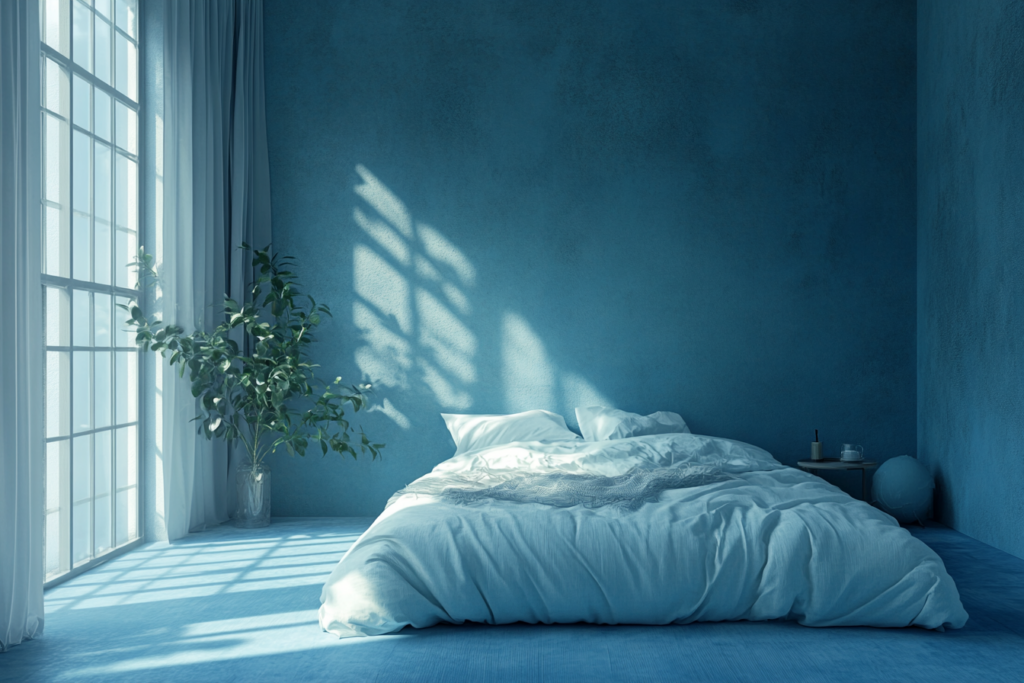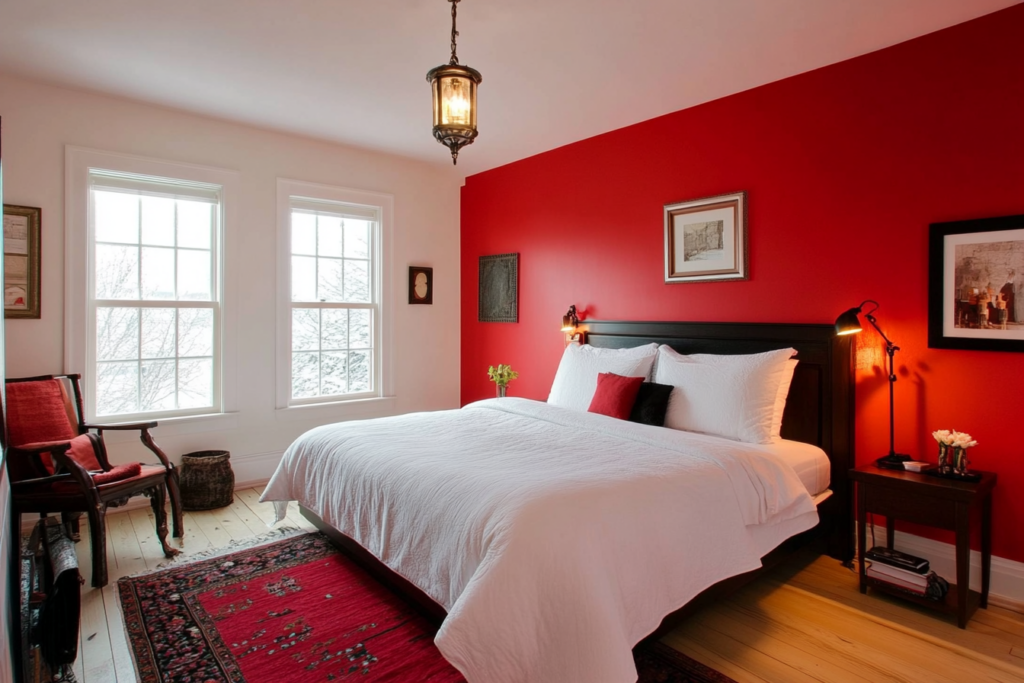Ever wondered why some hotel rooms help you drift off effortlessly while others leave you tossing and turning? The secret might be right on your walls. Research shows that bedroom color choices can significantly impact your sleep quality, with some shades promoting deeper rest while others might be sabotaging your slumber.
The science behind blue for better sleep

Blue consistently ranks as the top color choice for restful sleep, and there’s fascinating science behind it. When your eyes process blue, special receptors in your retina send signals to your brain that create a calming environment. This natural response can actually lower your heart rate and blood pressure, making it easier to wind down.
Studies show that people sleeping in blue rooms average an impressive 7 hours and 52 minutes of sleep per night. For the best results, opt for soft, muted blues like Mountain Stream rather than bright or electric blues, which can have the opposite effect.
Green and beige create natural calm
Green shades, particularly soft sage and muted forest tones, tap into our natural connection with the outdoors. These earth-inspired colors can make your bedroom feel like a peaceful retreat, averaging 7 hours and 36 minutes of sleep for occupants. Consider using Light Sage for a serene atmosphere.
Beige might seem boring, but it’s actually a sleep superstar. This neutral tone creates a distraction-free space that allows your mind to settle naturally into sleep mode. The key is choosing warm beiges rather than cool ones, as warmer tones promote better relaxation.
Pink and white offer surprising benefits

Light pink, once dismissed as purely decorative, has emerged as a serious contender for sleep-friendly colors. Studies suggest that pale pink can have a genuinely soothing effect on the body. The key is choosing muted, dusty pinks rather than vibrant fuchsias or hot pinks.
White rooms can promote quality sleep by creating a clean, uncluttered environment. However, there’s a catch – pure white can feel sterile and uncomfortable. The solution? Opt for softer whites with subtle undertones, and incorporate texture through textured bedding to avoid the “hospital room” effect.
Colors that disrupt your sleep cycle

Red tops the list of colors to avoid in the bedroom. This energetic shade can actually increase heart rate and blood pressure – exactly what you don’t want at bedtime. Similarly, dark brown and purple can create a gloomy atmosphere that affects sleep quality, while black absorbs too much light and can make a room feel cramped.
If you’re absolutely in love with these colors, consider using them sparingly as accent pieces. A few red throw pillows or a purple vase won’t impact your sleep the way four walls of these stimulating colors would.
Simple ways to incorporate sleep-friendly colors
Not ready to repaint? Start small with calming colored bedding or curtains. Even changing your lightbulbs to ones with warmer color temperatures can help create a more sleep-friendly environment. Remember that matte finishes are preferable to glossy ones, as they reduce light reflection and create a more soothing atmosphere.
The perfect bedroom color is ultimately a personal choice, but understanding these color-sleep connections can help you create your ideal sleep sanctuary. Whether you opt for tranquil blue, earthy green, or sophisticated beige, the right color choice could be your ticket to better sleep.
